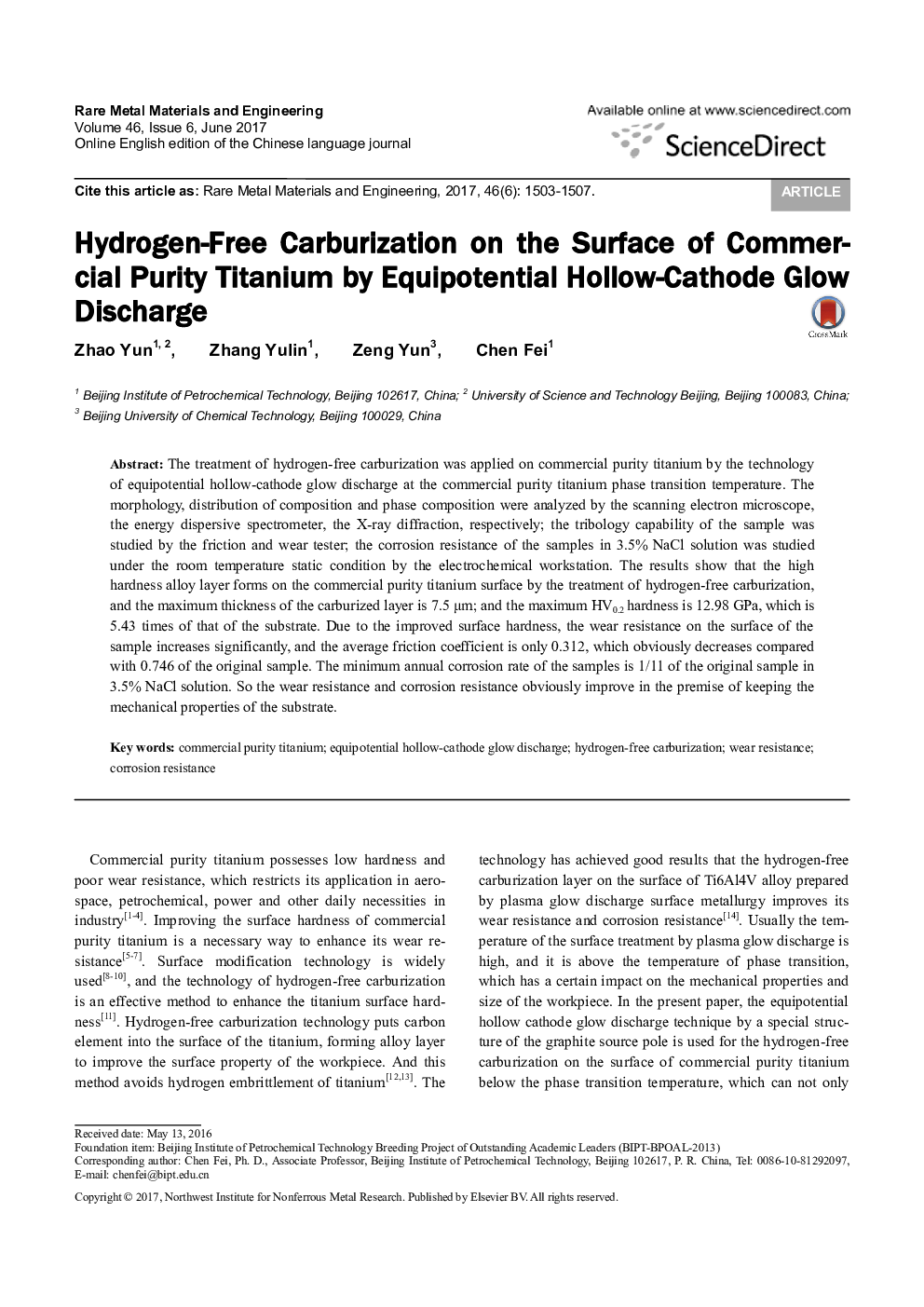| Article ID | Journal | Published Year | Pages | File Type |
|---|---|---|---|---|
| 7210358 | Rare Metal Materials and Engineering | 2017 | 5 Pages |
Abstract
The treatment of hydrogen-free carburization was applied on commercial purity titanium by the technology of equipotential hollow-cathode glow discharge at the commercial purity titanium phase transition temperature. The morphology, distribution of composition and phase composition were analyzed by the scanning electron microscope, the energy dispersive spectrometer, the X-ray diffraction, respectively; the tribology capability of the sample was studied by the friction and wear tester; the corrosion resistance of the samples in 3.5% NaCl solution was studied under the room temperature static condition by the electrochemical workstation. The results show that the high hardness alloy layer forms on the commercial purity titanium surface by the treatment of hydrogen-free carburization, and the maximum thickness of the carburized layer is 7.5 μm; and the maximum HV0.2 hardness is 12.98 GPa, which is 5.43 times of that of the substrate. Due to the improved surface hardness, the wear resistance on the surface of the sample increases significantly, and the average friction coefficient is only 0.312, which obviously decreases compared with 0.746 of the original sample. The minimum annual corrosion rate of the samples is 1/11 of the original sample in 3.5% NaCl solution. So the wear resistance and corrosion resistance obviously improve in the premise of keeping the mechanical properties of the substrate.
Related Topics
Physical Sciences and Engineering
Engineering
Mechanics of Materials
Authors
Zhao Yun, Zhang Yulin, Zeng Yun, Chen Fei,
